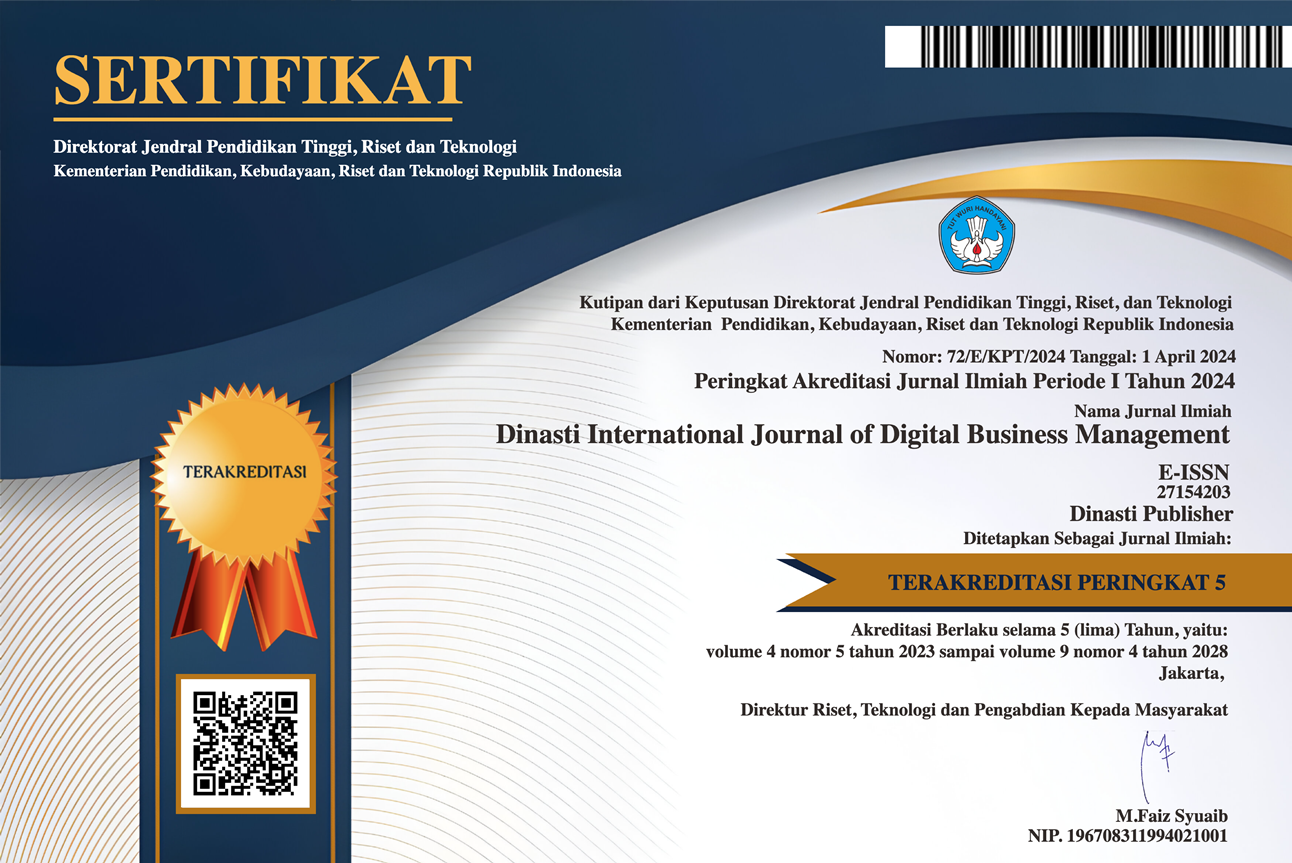PERFORMANCE ANALYSIS OF WASTE GATE VALVE IN REGULATING EXhaust GAS FLOW TOWARDS THE TURBOCHARGER FOR THE FLEXIBLE COMBUSTION PROCESS ON THE TANGGUH JAYA LNG/C SHIP
DOI:
https://doi.org/10.31933/dijdbm.v2i4.907Keywords:
Turbocharger, Round, Air quantity, Knocking, Misfire, Waste gate valve, cylinderAbstract
A turbocharger is an auxiliary engine that functions to supply air into the cylinder and in general every turbocharger has two sides, namely, the compressor side and the turbine side, the rotation of the turbocharger is generated from the remaining exhaust gases from combustion in the cylinder which goes to the turbine side of the turbocharger and produces rotation. on that side and also rotates at the same speed on the compressor side of the turbocharger. The amount of air that will enter the cylinder depends on the rotation of the turbocharger itself, if the rotation of the turbocharger is too fast it will produce too much air in the cylinder which results in knocking or knocking on the main drive engine, whereas if the turbocharger rotates too slowly it will result in too little quantity of air resulting in a misfire or failure of combustion in the cylinder. To determine the rotational speed of the turbocharger, we need a tool that can regulate the quantity of the remaining exhaust gases from combustion in the cylinder, namely the waste gate valve. When the writer carried out the sea practice, the writer experienced various interesting things about the waste gate valve, such as the opening that did not match the degree of the waste gate valve to the difference in the indicator readings on the waste gate valve. In this case the author will analyze the cause of the imperfect supply of air entering the cylinder caused by the non-optimal performance of the waste gate valve.
References
Istopo (1999), Ships and Their Cargo
Istopo (1997), Ship Stability for Commercial Ship Officers
Martopo, Arso. 2001. Cargo Handling. Semarang: Semarang Shipping Science Polytechnic.
Martopo, Arso. Soegiyanto. 2004. Cargo Handling and Management in Semarang: Semarang Shipping Science Polytechnic.
Siagian, Sondang P, 2004, Basic Principles of Human Resource Management, Volume I, Binarupa Aksara Publisher, Jakarta Sudjatmiko, FDC (2007) Principles of Commercial Shipping
Sugiyono (2005), Administrative Research Methods
Sugiyono (2007), Business Research Methods
Suharsini Arikunto (2010) Observation Technique
The International Safety Guide For Oil Tankers and Terminals (1996)
Triatmodjo, Bambang, 2003, Port, Beta offset, Yogyakarta.
RI Law No. 17 of 2008 concerning Shipping.
Winardi, 1999, Introduction to Sales Management, Bandung: PT. Image of Aditya Bakti.
Downloads
Published
Issue
Section
License
Authors who publish their manuscripts in this journal agree to the following conditions:
- The copyright on each article belongs to the author(s).
- The author acknowledges that the Dinasti International Journal of Digital Business Management (DIJDBM) has the right to be the first to publish with a Creative Commons Attribution 4.0 International license (Attribution 4.0 International (CC BY 4.0).
- Authors can submit articles separately, arrange for the non-exclusive distribution of manuscripts that have been published in this journal into other versions (e.g., sent to the author's institutional repository, publication into books, etc.), by acknowledging that the manuscript has been published for the first time in the Dinasti International Journal of Digital Business Management (DIJDBM).















































